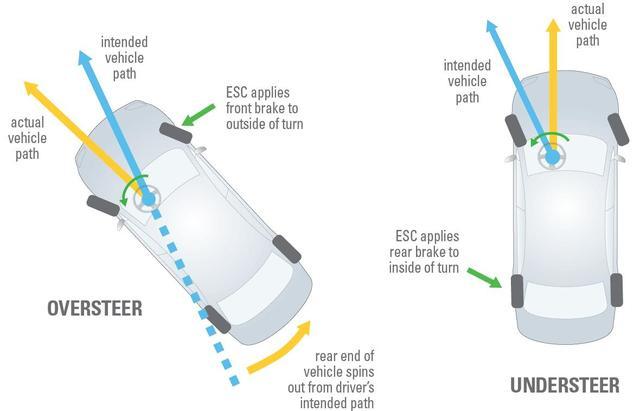Why electronic stability control is essential in your next used car

Tip of the Week
Of all the optional safety equipment in used cars to look for, electronic stability control is the most important.
Why is electronic stability control (ESC) so important? According to the Insurance Institute for Highway Safety, “ESC reduces fatal single-vehicle crash risk by half.” Unlike anti-lock brakes and airbags, stability control is one of the few now-common safety features that may not be in all of the used cars a shopper may be considering.
Electronic stability control works in conjunction with a vehicle’s anti-lock braking system (ABS), traction control and electronic power steering system. Sensors detect if the path of the vehicle differs from where the steering says the vehicle should be heading.
If that occurs, the ESC will intervene in a number of ways. Typically, the vehicle will reduce power — that is where traction control comes in — if the driver is applying throttle. This helps keep the vehicle from worsening its situation. In addition, the ESC system can do something no driver can. It can brake individual wheels with varying degrees of pressure and duration. By doing so, the system can help the vehicle correct its path, and prevent it from leaving the roadway, straying across a divided highway or even rolling over.
It would be nearly impossible to find a new modern vehicle without ESC, but even as late as 2010, some inexpensive models still lacked this critical safety technology.
The system began to show up in popular models like the Honda Accord and the Toyota Corolla around 2009. The government did not require ESC on passenger vehicles in the U.S. until 2012.
Shoppers considering a used car should look for the system in models they consider. Depreciation and market prices have such a big effect on the cost of a used car, it is unlikely that one with the technology will cost more than one without.
One easy way to tell if a vehicle has the system is to watch the dashboard lights when the vehicle is turned on. The icon above is the usual symbol for the system, and it should illuminate then go out if the car is equipped with ESC.
An owner’s manual is also a possible helper, but many manuals are general and may not specifically tell a driver if the car has the system.
A quick browser search for the exact model year and trim, and the words “Stability Control,” may be the fastest way to be sure if a vehicle under consideration has the system.
The List
In a recent Sunday Times column, Jeremy Clarkson, former “Top Gear” presenter, released a list of his top 10 favorite cars of 2015 and 2016. They are:
■ Mazda MX-5 2.0 Sport Recaro
■ Alfa Romeo 4C Coupe
■ Mercedes-AMG GT S
■ Ford Focus RS
■ Ford Mustang Fastback 5.0 V-8 GT
■ Volvo XC90 D5 AWD
■ Vauxhall Zafira Tourer 1.6 CDTi Tech Line
■ BMW M2
■ Ferrari 488 GTB
■ Lamborghini Aventador
Did you know?
A company called nuTonomy has launched the world’s first official driverless taxis. The service initially is being launched as a small trial in Singapore. The company was founded by two researchers from the Massachusetts Institute of Technology; they began live testing of their vehicles on Aug. 25.
— More Content Now